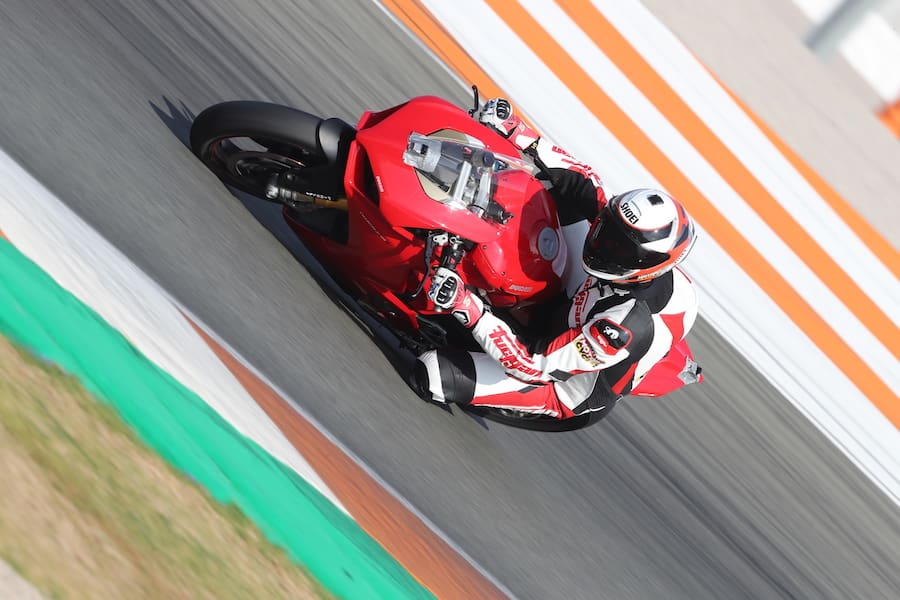Valencia’s Circuit Ricardo Tormo is a technical track, the current crop of production superbikes will spend a lot of the lap in second gear, snatching third a few times, and fourth gear as you round the arcing left-hander that leads onto the straight. Down the main chute, fifth gear and and a rapidly approaching 290km/h is what you’re going to get. While Ducati’s new 157.5kW (214hp) V4 engine wrapped in a 195kg (kerb) package may want for something of Phillip Island proportions, there is more to Ducati’s latest offering than just impressive power figures. The technical Valencia circuit is a place where a joyous smorgasbord of electronics and a sweet-handling chassis can be put to the sword – and the all-new Panigale V4 has both of those things in spades.
In the lead-up to the launch, I wondered whether this new era of Ducati superbike would feel the same as the outgoing V-twin, albeit with two additional cylinders. I liked the V-twin Panigale, but I found it hard work to ride in an everyday scenario and, on the track, I struggled to muster the level of aggression it demanded to get the most out of it.
Ducati’s catchphrase for its new 1103cc Desmosedici Stradale V4-powered Panigale is ‘A New Opera’, but when I thumbed the starter on the Öhlins-shod S model, the note from the 4-2-1-2 exhaust was less New Opera and more V-twin Encore!
You see, even though it’s an all-new design, the firing order for the new V4 engine, dubbed Twin Pulse, gives the bike an uncanny familiarity – think of it like each side of the V4 engine firing like a pair of V-twins.

Despite the larger engine, the bike is still quite narrow across the shoulders with Ducati’s new Front Frame chassis at the heart of the slim lines (see breakout). The dual-layer fairing design is wide around the nose area where two large air intakes have swallowed the slim full-LED headlights and daytime running lights – making it the most aggressive-looking Panigale yet.
The fairing hugs close to the tank, which isn’t really the fuel tank at all – that’s located closer to the rider and extends underneath the seat – the area just behind the steering head is instead where the bike’s electronic brain is stored. The previous Panigale’s side-mounted shock is gone, replaced by a more conventional unit and the curvaceous rear-end is as Italian as you’re going to get.
A new five-inch TFT dash is super-bright and offers all the usual information at the press of a switch-block button, with a large circular rev-counter taking up most of the screen.
As the revs rise, a white trail travels around the circular display changing to orange, then to red as the engine reaches its 14,500rpm rev limiter. The selected riding modes of Street, Sport or Race as well as the programmable parameters for traction control (DTC EVO), wheelie control (DWC EVO), slide control (DSC), power launch (DPL EVO), engine braking (EBC EVO) and ABS Cornering EVO are all displayed full time. The term EVO refers to the latest generation of electronics which have been developed especially for the new V4. At the heart of the electronics is a powerful six-axis IMU – even the Ducati Quick Shift (DQS EVO) is now lean-angle sensitive.
Read the full story in the current issue (Vol 67 No 16)of AMCN on sale now !












